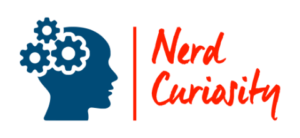Imagine you’re leading a team through the development of an exciting new product. Intuitively, you understand that your tasks should prioritize the user’s experience and the goals of the project. User stories become the bridge between these users’ needs and the product features that will meet them. But who is best positioned to construct this critical bridge? It’s a pivotal question that can influence the trajectory of collaboration and success.

Product managers do write user stories, but this task is not exclusively theirs. The collaborative nature of teams often means that while product managers oversee the process, others are involved in articulating these essential items.
As we dive deeper, you’ll discover the varied duties of a product manager, how they guide the team’s use of user stories, and why the task of writing them may be shared. There is a dynamic interplay between understanding the user’s perspective and translating that into actionable tasks. You’ll learn about the strategies employed to keep user stories effective and how they facilitate the meeting of minds and talents within a project team.
The Role of the Product Manager

In the realm of product development, Your product manager serves as the compass, guiding the product’s direction, strategy, and vision. Their expertise shapes and steers the product lifecycle.
Understanding the PM’s Responsibilities
Your product manager’s role encompasses a broad array of responsibilities that bridge business objectives and user needs. They are tasked with the defining of product goals, establishing what will be built and setting the priority for each feature. To do this effectively, a product manager must excel in communication and collaboration with internal teams and stakeholders to align product development efforts with market demands.
Apart from this, they are involved in market research, product road mapping, and feature definition. The benefits of user story mapping are significant as they aid in creating a shared understanding among the team. This facilitates a smoother development process and helps ensure that all features align with user goals.
Product Managers vs. Product Owners
The distinction between a Product Manager (PM) and a Product Owner (PO) can sometimes seem blurred, primarily as they both focus on delivering value to customers and the business. However, a Product Manager oversees the product’s strategic aspects like market research, vision crafting, and the go-to-market strategy. On the other hand, a Product Owner is often more tactical, dealing primarily with backlog management and acting as the liaison between the development team and the product manager.
A PO’s involvement in writing user stories is a direct channel through which they communicate the detailed product requirements to the Agile teams. You’ll frequently find PMs involved during the initiation of the process, but they may rely on POs to convey the details henceforth, ensuring that the development team understands what needs to be built.
Crafting Effective User Stories

Crafting effective user stories is a crucial skill for product managers. It involves conveying the features of a product in a way that centers on the value to the end-user, ensuring clarity and a shared understanding among stakeholders.
Components of a User Story
User stories are a fundamental component of an agile backlog, serving as the building blocks for larger epics and ultimately defining the tasks necessary to meet user needs. A well-rounded user story typically contains three essential parts:
- Title: A brief, descriptive identifier.
- Persona: The profile of the user for whom the story is written, articulating the role, characteristics, and goals of the user to create a user-centric narrative.
- Acceptance Criteria: These specify the conditions that must be met for the user story to be considered complete, providing clear value to the user.
Incorporating personas ensures that the story addresses real user needs and steers away from vague or solution-based language.
User Story Templates
Templates provide a framework to ensure consistency and completeness in writing user stories. The classic template goes as follows:
- As a [persona], I want [action] so that [value].
By following this template, your user stories will maintain a user-focused context, guiding your team to deliver results that resonate with users. A strong acceptance criteria part of this template acts as the checklist your team will use to verify that user expectations are met.
Common Pitfalls in Writing User Stories
When writing user stories, certain pitfalls can undermine their effectiveness:
- Vagueness: A user story that lacks specific details can lead to confusion and misinterpretation.
- Solution-Oriented Stories: These take the focus away from the user’s needs and emphasize the how rather than the why and what.
- Insufficient Acceptance Criteria: Acceptance criteria that do not thoroughly define what ‘done’ looks like can result in unfinished or unsatisfactory tasks.
Integration into the Product Lifecycle

In product management, your understanding of how user stories integrate into the overall product lifecycle is crucial. This process involves meticulous planning and structured steps to refine and prioritize product features.
From User Story to Product Backlog
User stories form the nucleus of the product backlog. As you craft these concise narratives, you’ll distill the essence of what your users need into actionable goals. Start by breaking down complex features into smaller, manageable chunks, known as epics, to maintain a clear and focused workflow.
- Step 1: Write the user story.
“As a [role], I want [feature] because [reason].” - Step 2: Break down larger user stories into epics if necessary.
Use a user story map to organize and visualize these relationships. - Step 3: Add user stories and epics to the backlog.
Include acceptance criteria to clearly define what success looks like for each item.
Prioritization and Sprint Planning
Your ability to prioritize effectively shapes the success of the upcoming sprint. This phase in agile software development is about aligning user needs with business goals, balancing long and short-term objectives.
- Criteria for Prioritization:
- Business Value
- User Impact
- Technical Feasibility
- Risk and Dependencies
During sprint planning, you’ll select user stories from the top of the backlog, ensuring the team knows what to focus on. The chosen stories are scheduled for the next sprint, driving product development forward in a purposeful, user-centric direction.
- Sprint Planning Steps:
- Review the top-priority user stories with your team.
- Estimate effort and complexity, often with story points.
- Boldly commit to what can realistically be accomplished in the sprint duration.
Collaboration with Stakeholders and Teams

Effective collaboration is the foundation of successful user story creation in product management. It hinges on dynamic interactions with stakeholders and cross-functional teams to hone a product that meets customer needs with precision.
Gathering Feedback from Stakeholders
Your role in engaging stakeholders involves active listening and comprehensive communication. Convert your stakeholders’ inputs into actionable insights that reflect the customer’s perspective. For a structured approach:
- Interview key stakeholders: You’ll gain insights directly related to their experience and expectations.
- Conduct workshops: Using these can help clarify the user experience and requirements.
- Utilize surveys: Quick and broad, they gather feedback effectively from a large audience.
Remember, feedback is a treasure trove that informs the narrative of user stories, ensuring they echo the customer’s voice.
Working with Cross-Functional Teams
Collaboration with cross-functional teams, like developers, sales, and marketing, is vital. Here’s how to make it work:
- Regular stand-ups: Keep teams aligned on goals and progress.
- Joint brainstorming sessions: Foster a creative space for collaboration.
- Clear documentation: It promotes transparency and serves as a reference point.
Evaluating Impact on User and Business

When product managers craft user stories, their ultimate focus lies in aligning the narrative with both customer satisfaction and the strategic objectives of the business.
Assessing User Story Success
Your user stories are potent tools that bridge the gap between user needs and the features you develop to meet them. A successful user story improves the user experience by clearly defining the end goal and the user journey needed to reach it. To assess the influence of these stories, you should:
- Track metrics related to customer support interactions, as decreases may indicate users are finding the platform more intuitive.
- Examine feedback for mentions of new features to gauge if they’re resolving the customer problem effectively.
Efficiency is another key aspect; if stories are well-written, they should contribute to a more streamlined development process.
Driving Business Objectives
Converting user stories into business value is imperative; after all, they’re not just about enhancing the customer experience, but also about fostering growth and achieving specific targets. Consider how each story supports the broader aims of the business by:
- Identifying if the feature outlined raises overall efficiency within your user base.
- Ensuring each story possesses clear criteria that, when met, signify progress towards the business owner’s vision.
Your ability to tie the personal touch of user narratives to concrete business objectives will largely dictate the overall positive impact on both the users and the company.
Conclusion

In the dynamic arena of product management, your role involves a multifaceted approach to decision-making and team collaboration. You are not always the primary author of user stories, but you play a pivotal part in shaping and influencing their creation. Your expertise guides the identification of key user roles and objectives, and you may find yourself crafting user stories to align with customer needs as detailed by UXCam.
The onus to write user stories may also rest with other team members, especially when a collective approach yields better results according to SAFe. Remember, the primary goal of these narratives is to ensure a user-centric focus in product development. There’s an undeniable power in well-crafted user stories; they intricately weave the user’s needs with your product’s features.
Effectively, your involvement can range from in-depth writing to a more supervisory role, where you oversee the backlog and ensure the stories meet the crafted acceptance criteria. Through your direction, the team can utilize tools like Jira to map out and organize user stories, fostering a productive environment for your project’s success. It’s your guidance and strategic thinking that can transform user stories from mere tasks on a board into a compelling pathway that leads to a product that resonates deeply with your audience.
